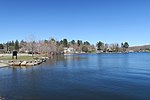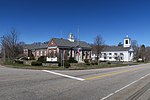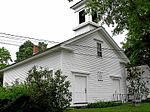Western Connecticut Highlands AVA
1988 establishments in ConnecticutAmerican Viticultural AreasConnecticut wineGeography of Fairfield County, ConnecticutGeography of Hartford County, Connecticut ... and 4 more
Geography of Litchfield County, ConnecticutGeography of New Haven County, ConnecticutUse mdy dates from April 2021Wine region stubs
The Western Connecticut Highlands AVA is an American Viticultural Area that includes all of Litchfield and parts of Fairfield, New Haven, and Hartford counties in Connecticut. The Connecticut Highlands are far enough away from Long Island Sound that there is little of the moderating effect on climate that large bodies of water produce. The region is relatively cool, with a short growing season between mid-May and mid-September. The soil in the area is glacial schist and gneiss. Local vintners have had the most success with cool climate Vitis vinifera and French hybrid grape varieties. The region is located in hardiness zones 5b and 6a.
Excerpt from the Wikipedia article Western Connecticut Highlands AVA (License: CC BY-SA 3.0, Authors).Western Connecticut Highlands AVA
Wonposet Passway,
Geographical coordinates (GPS) Address Nearby Places Show on map
Geographical coordinates (GPS)
| Latitude | Longitude |
|---|---|
| N 41.7042 ° | E -73.2204 ° |
Address
Wonposet Passway 7
06763
Connecticut, United States
Open on Google Maps







